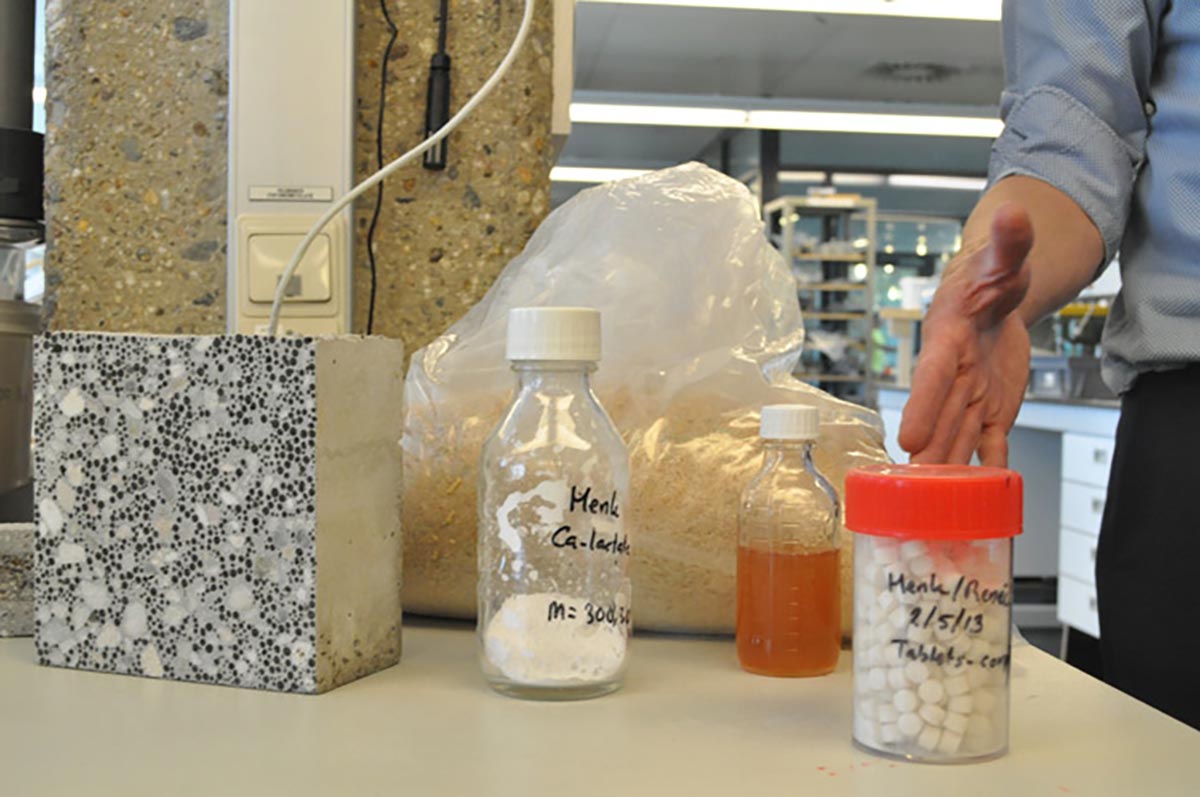By Meghan Morris
This microbiologist uses a non-scientific term to describe his cure for cracking concrete: limestone-pooping bacteria.
Henk Jonkers, a professor at Delft University School of Technology in the Netherlands, has created a patented mixture containing bacteria that, when exposed to water, produce limestone that fills microcracks in concrete. If these cracks aren’t filled, water and salt seep in and corrode underlying steel beams and other metal support structures.
This technology, called self-healing concrete, could extend the lifespan of a concrete structure by 30 percent, saving labor and repair costs, according to Jonkers. It can’t repair uneven sidewalks or potholes, but in the last year, researchers at Delft have applied the concept to irrigation canals in Ecuador and parking structures in the Netherlands.
Jonkers said the inspiration for this technology came when a colleague read an article about limestone-producing bacteria that prevented erosion on monuments. In a presentation last month to visiting American journalists, Jonkers traced his own journey from marine biology, including a Ph.D. in microbiology, to his work at Delft University, where scientists combined multiple areas of expertise to test this idea and received their first patent in 2008.

In the Netherlands the self-healing agent adds about 50 percent to the cost of a cubic meter of concrete. Jonkers said the higher price has made some contractors wary because they don’t benefit from concrete with a longer life span. “Every contractor will say this is impossible and I can never sell this to my customer,” he said.
But, he went on, concrete is only about 1 percent of total construction cost, so contractors can highlight the long-term cost reductions to building owners, who will recoup the initial costs in three to four years through reduced labor costs.
Last November Jonkers and his team turned multiple concrete patents into a company to test and monetize the self-healing technology. Named Green Basilisk, after the lizard that can walk on water, the company also touts the technology as a repair mortar that could be used for bridges with structural damage, for example, and as a liquid spray for smaller touch-ups.
Instead of selling these products directly to consumers, Green Basilisk licenses the technology to construction companies to avoid potential misapplications of the concrete. The company is in talks with several multinational companies, Jonkers said, and the liquid spray will be available to the U.S. by September.
“This is not the main task of the university, to make money, so that’s why the strategy is to work together with companies and then in due time the companies will completely take over so there will be some revenues coming back to the university,” he said. “Our dream is that our technology will really be developed and find a place in society.”
Jonkers isn’t the only one working on this technology, although Delft University is the leader in the self-healing space, other experts acknowledge. Several thousand miles away, a team of Northwestern University researchers in Evanston, Ill., is experimenting with fungi instead of bacteria for self-healing purposes.
Both materials are currently saddled with the unpredictability of their long-term use. Jonkers said his team hypothesizes that the bacteria will live for decades based on tests and field samples that found dormant bacteria in 200-year-old soil.
Northwestern professor Gianluca Cusatis said engineers are confronting erosion in structures built 60 years ago, and it’s impossible to know with certainty how well the self-healing aggregate might hold up for such a long time.
However, he said in an interview, “it doesn’t mean that it’s useless, because there are a number of cracking and deterioration mechanisms that occur at a very early age when concrete is still developing strength. For building new infrastructures with materials that can heal themselves, I think that’s a huge promise.”
Meghan Morris reported from the Netherlands as part of a Dutch embassy-sponsored trip for journalists.


